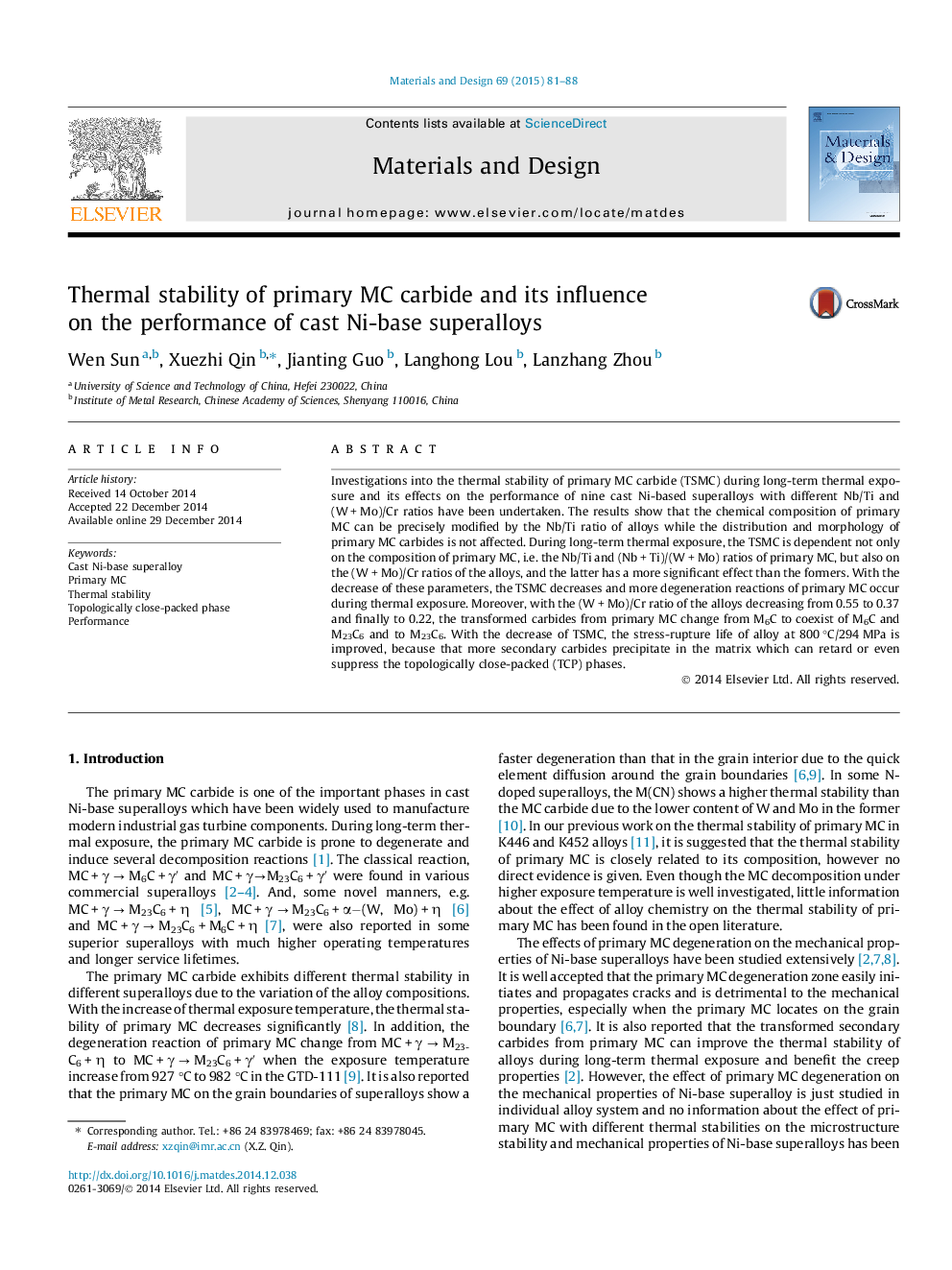| Article ID | Journal | Published Year | Pages | File Type |
|---|---|---|---|---|
| 828693 | Materials & Design (1980-2015) | 2015 | 8 Pages |
Abstract
Investigations into the thermal stability of primary MC carbide (TSMC) during long-term thermal exposure and its effects on the performance of nine cast Ni-based superalloys with different Nb/Ti and (W + Mo)/Cr ratios have been undertaken. The results show that the chemical composition of primary MC can be precisely modified by the Nb/Ti ratio of alloys while the distribution and morphology of primary MC carbides is not affected. During long-term thermal exposure, the TSMC is dependent not only on the composition of primary MC, i.e. the Nb/Ti and (Nb + Ti)/(W + Mo) ratios of primary MC, but also on the (W + Mo)/Cr ratios of the alloys, and the latter has a more significant effect than the formers. With the decrease of these parameters, the TSMC decreases and more degeneration reactions of primary MC occur during thermal exposure. Moreover, with the (W + Mo)/Cr ratio of the alloys decreasing from 0.55 to 0.37 and finally to 0.22, the transformed carbides from primary MC change from M6C to coexist of M6C and M23C6 and to M23C6. With the decrease of TSMC, the stress-rupture life of alloy at 800 °C/294 MPa is improved, because that more secondary carbides precipitate in the matrix which can retard or even suppress the topologically close-packed (TCP) phases.
Related Topics
Physical Sciences and Engineering
Engineering
Engineering (General)
Authors
Wen Sun, Xuezhi Qin, Jianting Guo, Langhong Lou, Lanzhang Zhou,
